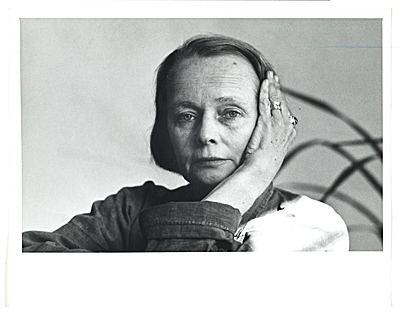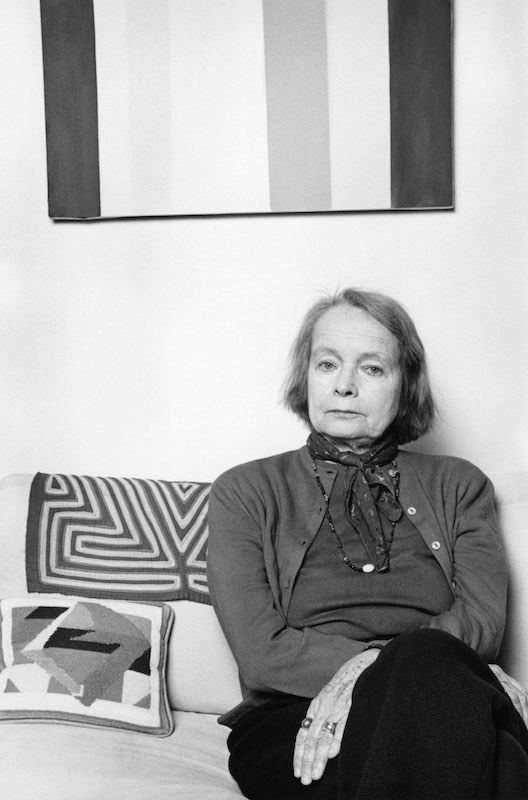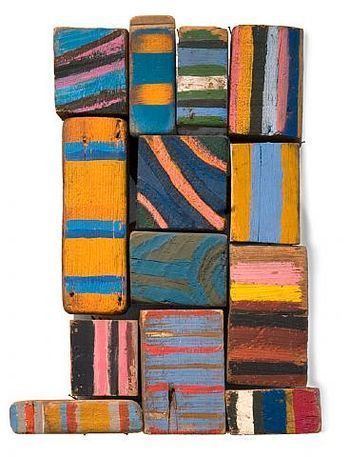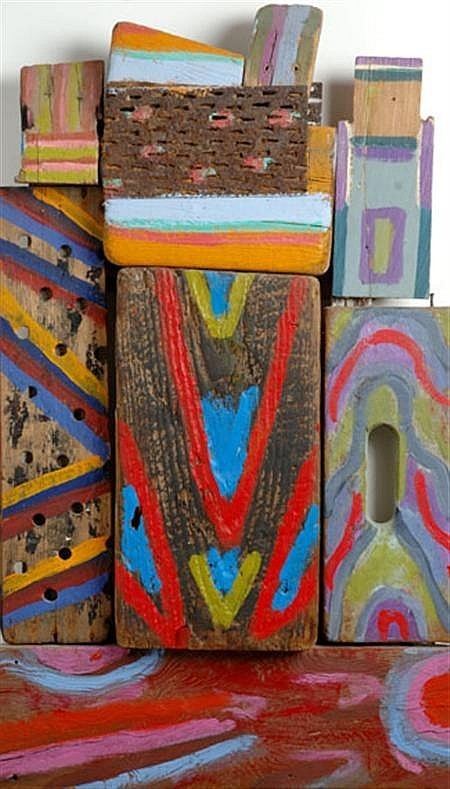Name Betty Parsons | Role Artist | |
Died July 23, 1982, New York City, New York, United States Artwork Bright Day, Target, Aspen, Colorado, Indian Writhing | ||
About the arts betty parsons and cleve gray
Betty Parsons (born Betty Bierne Pierson, January 31, 1900 – July 23, 1982) was an American artist, art dealer, and collector known for her early promotion of Abstract Expressionism.
Contents
- About the arts betty parsons and cleve gray
- Early life and education
- Early Gallery Career
- Betty Parsons Gallery
- Artists Who Worked For Betty Parsons and Showed At Her Gallery
- Betty Parsons The Artist
- Legacy
- References
Early life and education

Betty Bierne Pierson was born in 1900, the second of three daughters. She came from a wealthy New York family that divided its time between New York City, Newport, Palm Beach, and Paris.

At the age of ten, Parsons was enrolled in Miss Chapin's school for girls in New York. She remained at the Chapin School for five years but was a mediocre student who was easily bored. In 1913, Parsons visited the Armory show, the International Exhibition of Modern Art. She was delighted and inspired by what she saw and described this pivotal moment years later: "It was exciting, full of color and life. I felt like those paintings. I couldn't explain it, but I decided then that this was the world I wanted... art." Although her parents disapproved, she soon began studying art in the studio of Gutzon Borglum, whom she described as a poor teacher.

In 1919, Parsons married Schuyler Livingston Parsons, an affluent, New York City socialite ten years her senior. Her family hoped that Parsons would settle down into a conventional lifestyle, but the couple divorced in Paris only three years later on the grounds of incompatibility. Parsons remained in Paris and enrolled in the Académie de la Grande Chaumière, where she studied under the sculptors Émile-Antoine Bourdelle (formerly an assistant to Auguste Rodin) and Ossip Zadkine. In the summers, she studied painting with Arthur Lindsey on the coast of Brittany. She bought a small house in Montparnasse where she lived with English artist Adge Baker, with whom she had a romantic relationship. The two separated in 1932 but remained lifelong friends.

In 1933, after losing her money in the Great Depression, Parsons returned to America. She first traveled to Santa Barbara, California, where she taught sculpture classes for a short time. In 1936, she moved back to New York and had her first solo exhibition in New York at Midtown Gallery. Her watercolor paintings were well-received, and referred to in one review as "delightful" and "interestingly conceived". She would have nine more one-woman shows at Midtown over the next twenty years.
Early Gallery Career

Following her one-woman show at the Midtown Galleries, owner Alan Bruskin offered Parsons her first gallery job: selling art on commission. That position was short-lived and, in the fall of 1937, Parsons began working at the gallery of Mrs. Cornelius J. Sullivan, a founding trustee of the Museum of Modern Art, New York.

In 1940, Parsons left Sullivan's gallery and took a position managing a contemporary gallery in the Wakefield Bookshop at 64 East 55th Street. This was her first job managing a gallery on her own; she had full curatorial control regarding artists and exhibitions. She was soon representing many contemporary artists, including Saul Steinberg, Adolph Gottlieb, Alfonso Ossorio, Hedda Sterne, Theodoros Stamos, and Joseph Cornell.

In September 1944, after four years at the Wakefield Gallery, Parsons was invited to start and manage a contemporary art division in the gallery of art dealer Mortimer Brandt. When Brandt moved to England after the war, Parsons subleased the space from him and opened her own gallery at the urging of her artists.
Betty Parsons Gallery
The Betty Parsons Gallery opened in 1946 at 15 East 57th Street in Manhattan. The gallery regularly exhibited twelve shows a season, from September to May, with each show lasting only two to three weeks. At a time when the market for avant-garde American art was minuscule, Parsons was the only dealer willing to represent artists like Jackson Pollock after Peggy Guggenheim closed her Art of This Century gallery and returned to Europe in 1947. Parsons showed work by William Congdon, Clyfford Still, Theodoros Stamos, Ellsworth Kelly, Mark Rothko, Hedda Sterne, Forrest Bess, Michael Loew, Lyman Kipp, Judith Godwin, and Robert Rauschenberg among others. In 1950, she gave Barnett Newman, whom she had met in 1943, his first solo show; Rothko and Tony Smith assisted with the installation. In the late 1950s, Smith and Newman helped to remodel Parsons’ gallery, creating an almost cube-shaped main space framed by white walls with subtly curved corners and a concrete floor whose proportions fitted their ordered works. Helen Frankenthaler, the painter, who met Parsons in 1950, said, "Betty and her gallery helped construct the center of the art world. She was one of the last of her breed." Many of the Abstract Expressionist artists she had launched left her gallery for more commercial galleries such as Sam Kootz and Sidney Janis. Art critic B. H. Friedman noted, "She was resentful. She had struggled so long to get them established, and other dealers capitalized on her efforts."
She later moved on to a younger generation of American artists, including Agnes Martin, Jasper Johns, Jack Youngerman, Richard Pousette-Dart, Jeanne Reynal, Walter Tandy Murch, Leon Polk Smith, Richard Tuttle, Mino Argento, José Bernal, and Oliver Steindecker (who was Mark Rothko's last assistant) among others. She ran the gallery until her death in 1982 after which it was taken over by her former gallery assistant Jack Tilton (1951 - 2017) who then transformed it into his own establishment.
Artists Who Worked For Betty Parsons and Showed At Her Gallery
Parsons was generous in promoting artists. She never refused walk-in artists with their artwork. Always encouraging and caring, she often gave crtitiques on the spot. Parsons nurtured the artists who assisted her and they were encouraged to show at her gallery. Richard Tuttle had his first show a year after he began assisting Betty Parsons. Thomas Nozkowski worked for her after graduating from Cooper Union. Parsons showed his sculptures. In 1980, Ib Benoh began working for Betty Parsons as her assistant and within a few months she included him in a group show.
Betty Parsons The Artist
Parsons was also a painter. In 1959, Tony Smith designed her waterfront house-studio on the North Fork of the east end of Long Island, New York, perched on a cliff overlooking Long Island Sound, where Parsons worked on her art in her time off from the gallery. Her painting style changed in 1947, turning from small landscapes and portraits into a bold, subjective abstraction when she began to make constructions from bits of wood and other materials that washed up on the beach near her home; most often her constructions reflected the area around her North Fork home, but sometimes the pieces reflected her travels to the Caribbean and abroad.
Parsons' work has been exhibited in a number of galleries, including the Anita Shapolsky Gallery in New York City, Spanierman Gallery in New York City, Virginia Miller Galleries in Coral Gables, Florida, and Whitechapel Art Gallery in London.
Legacy
Parsons' work is held in the collections of the Smithsonian American Art Museum and the National Museum of Women in the Arts, her personal papers and those from her gallery are held at the Archives of American Art. The Montclair Art Museum mounted a major retrospective of Parsons's work in 1974. In 1992, the Pollock-Krasner House and Study Center of East Hampton showed her paintings on paper; that same year, the Fine Arts Gallery of the Southampton Campus of Long Island University exhibited painted wood "constructions".
